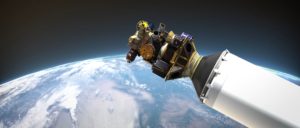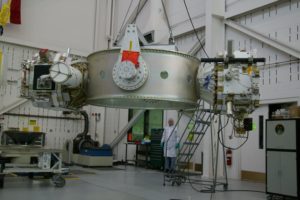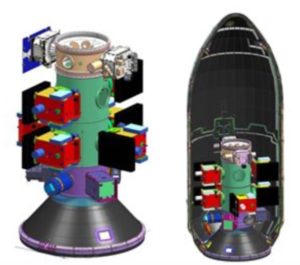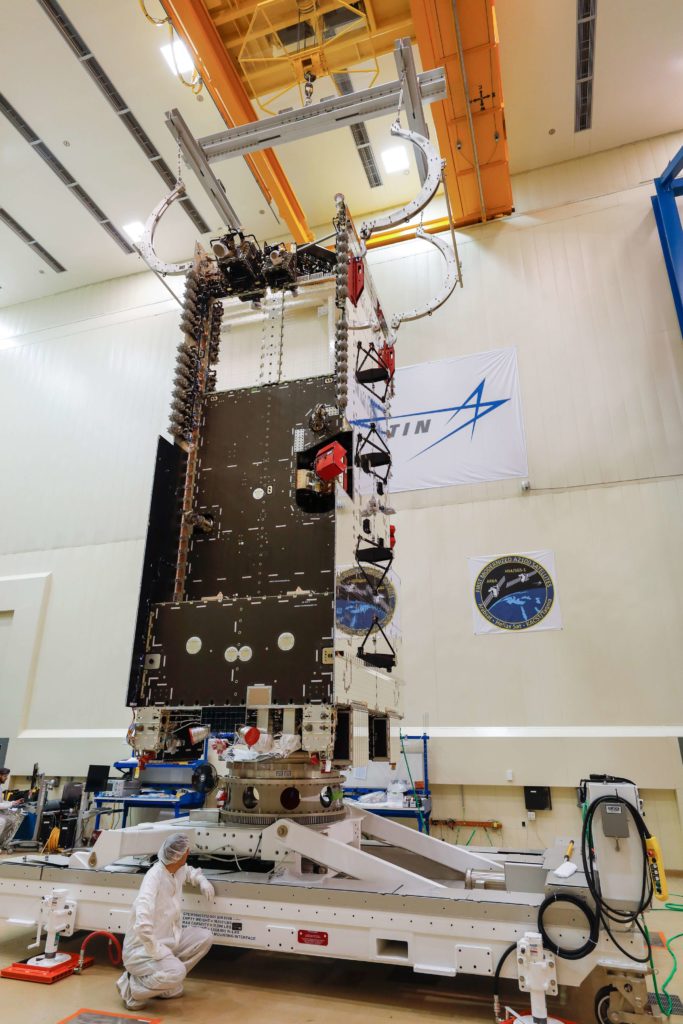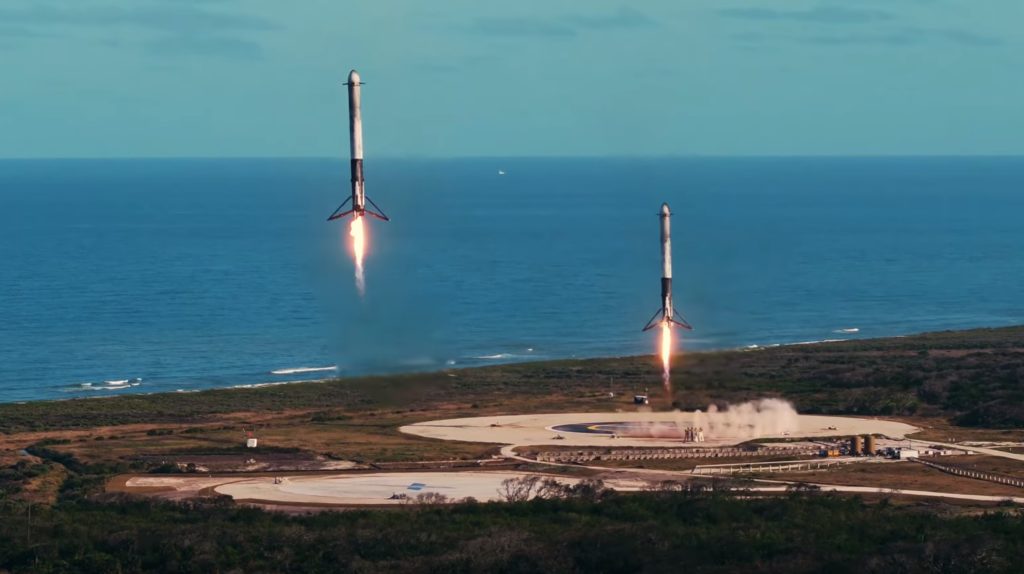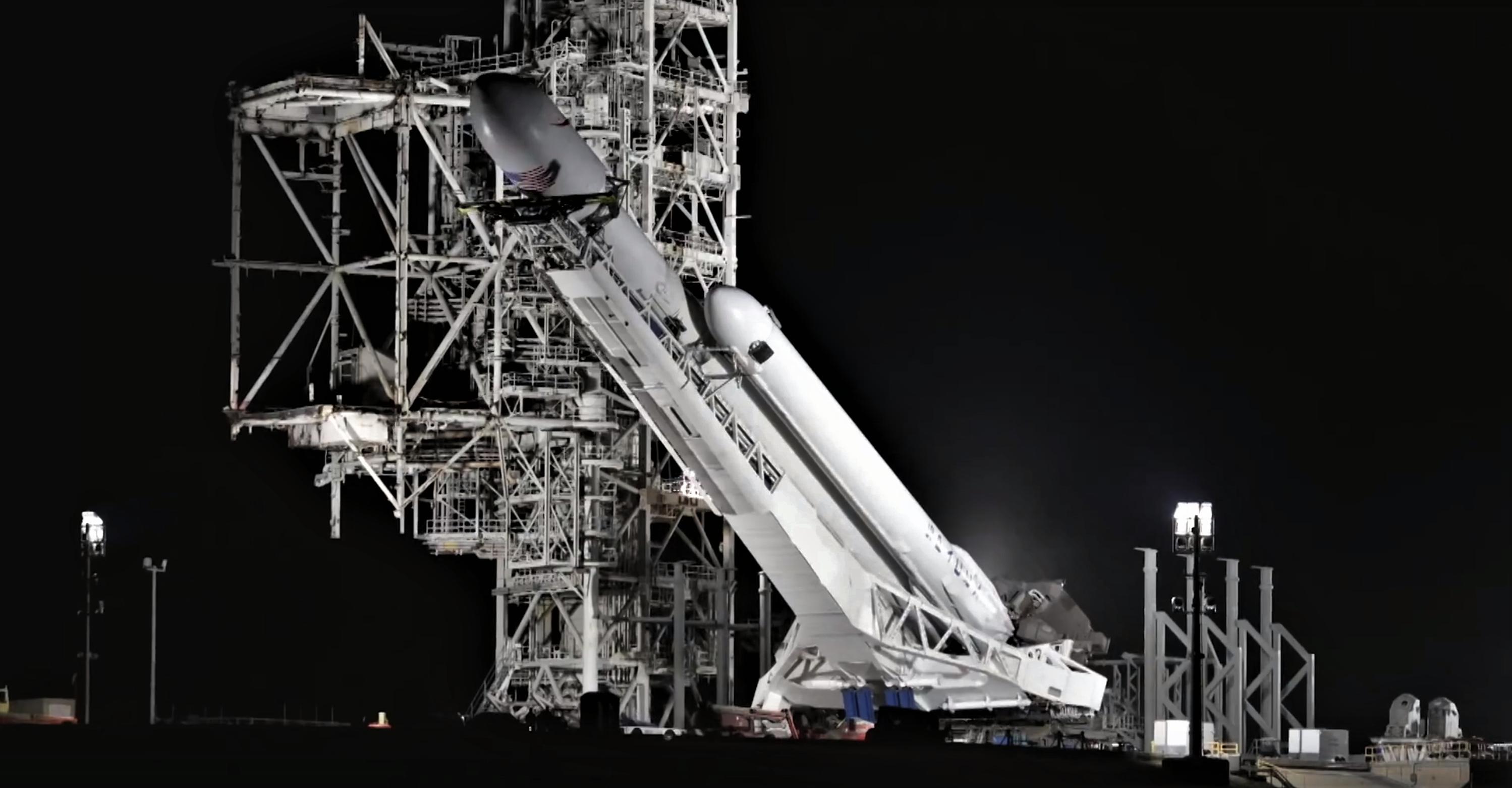

News
SpaceX’s first government Falcon Heavy launch aiming for “early 2019” per USAF
Linked to the rocket and mission through its own LightSail 2 solar sail satellite, The Planetary Society reports that the USAF and SpaceX are now targeting Falcon Heavy’s first launch for a government customer in “early 2019”.
Previously expected to launch around November 30th, just a month from today, it’s clear that SpaceX’s second Falcon Heavy rocket has yet to approach flight readiness, likely marginalized by a more pressing focus on near-term Falcon 9 missions and Crew Dragon’s imminent flight debuts.
LightSail 2 launch pushed to early 2019
An Air Force official says an ‘initial launch capability’ is being reassessed: https://t.co/QYA6NFPP1I pic.twitter.com/RJclLvcbSs
— Planetary Society (@exploreplanets) October 29, 2018
According to Planetary Society, a USAF official provided an update – per the group’s involvement in its STP-2 rideshare launch – stating that its “initial launch capability” was being reassessed, essentially a roundabout way of saying “A new launch date is being determined”. Reasons for the multitude of delays since Falcon Heavy’s successful February 2018 debut are few and far between, with the most likely explanation being some combination of issues with one or several of the ~25 satellites manifested and SpaceX’s ability to build a new Falcon Heavy rocket in time.
However, it’s decidedly ambiguous as to which one of those explanations truly takes precedence, given that SpaceX apparently told the USAF and its customers that it was ready to launch the mission between June and August.
“Officials working on the mission said SpaceX has provided the Air Force and other customers a 60-day window for launch opening on June 13. The Air Force spokesperson confirmed it will be the second Falcon Heavy mission.” – Stephen Clark, SpaceflightNow
Assuming SpaceX’s launch readiness announcement was accurate, the USAF and its customers must have run into some extreme issues while organizing all STP-2 payloads and integrating those satellites onto a custom-built adapter, a task that companies like Spaceflight Industries have shown to often be the long pole of rideshare launches. It’s also possible that SpaceX executives and managers underestimated or undersold the challenge of moving from a Falcon Heavy built solely on old Falcon 9 Block 2 and 3 boosters to an all-Block 5 version of the rocket, featuring a large number of highly-consequential changes like uprated engines and an entirely new approach to assembling each booster’s octaweb.
- Spaceflight’s SSO-A rideshare mission is quite similar to STP-2, albeit with more satellites on the smaller side. (Spaceflight)
- One group of STP-2 passengers, known as DSX, has been awaiting launch for more than eight years. (USAF)
- SpaceX’s second Falcon Heavy launch will either be the USAF’s STP-2, a collection of smaller satellites, or Arabsat 6A, a large communications satellite. (USAF)
Lastly, depending on the nature of the launch contract between them, it’s possible that SpaceX had been planning on reflying Falcon 9 Block 5 boosters as its next Falcon Heavy’s side boosters, a move that would dramatically shorten the lead time required for a new Falcon Heavy to be produced. If the USAF expects or has unconditionally demanded all-new hardware for the launch of STP-2, SpaceX would need at least two (if not three) times the production resources to build and test Falcon Heavy #2, all while paralyzing those resources until well after the rocket’s first flight.
Building three separate Falcon 9/Heavy boosters, acceptance-testing them in Texas, and delivering them to Florida – all under uniquely strict USAF standards – would likely take SpaceX a bare minimum of four months from start to finish. In the guaranteed event that SpaceX had to simultaneously continue regular production, test operations, and preparations for Crew Dragon launches, an all-new Falcon Heavy would likely take more than 6-8 months to make flight-ready while still allowing SpaceX to avoid severe launch delays for its many other customers.
- The communications satellite Arabsat-6A. (Lockheed Martin)
- Falcon Heavy’s side boosters seconds away from near-simultaneous landings at Landing Zones 1 and 2. (SpaceX)
To add additional confusion to the mix, multiple reliable sources have confirmed that STP-2’s actual launch target is closer to March 2019, quite a stretch for “early 2019”. At the same time, Falcon Heavy customer Arabsat has reported that its Arabsat 6A satellite is expected to launch as early as January 2019. Ultimately, clarity can only come from the USAF, Arabsat, or SpaceX itself – for now, we wait.
For prompt updates, on-the-ground perspectives, and unique glimpses of SpaceX’s rocket recovery fleet check out our brand new LaunchPad and LandingZone newsletters!
News
Tesla launches in India with Model Y, showing pricing will be biggest challenge
Tesla finally got its Model Y launched in India, but it will surely come at a price for consumers.

Tesla has officially launched in India following years of delays, as it brought its Model Y to the market for the first time on Tuesday.
However, the launch showed that pricing is going to be its biggest challenge. The all-electric Model Y is priced significantly higher than in other major markets in which Tesla operates.
On Tuesday, Tesla’s Model Y went up for sale for 59,89,000 rupees for the Rear-Wheel Drive configuration, while the Long Range Rear-Wheel Drive was priced at 67,89,000.
This equates to $69,686 for the RWD and $78,994 for the Long Range RWD, a substantial markup compared to what these cars sell for in the United States.
🚨 Here’s the difference in price for the Tesla Model Y in the U.S. compared to India.
🚨 59,89,000 is $69,686
🚨 67,89,000 is $78,994 pic.twitter.com/7EUzyWLcED— TESLARATI (@Teslarati) July 15, 2025
Deliveries are currently scheduled for the third quarter, and it will be interesting to see how many units they can sell in the market at this price point.
The price includes tariffs and additional fees that are applied by the Indian government, which has aimed to work with foreign automakers to come to terms on lower duties that increase vehicle cost.
Tesla Model Y seen testing under wraps in India ahead of launch
There is a chance that these duties will be removed, which would create a more stable and affordable pricing model for Tesla in the future. President Trump and Indian Prime Minister Narendra Modi continue to iron out those details.
Maharashtra Chief Minister Devendra Fadnavis said to reporters outside the company’s new outlet in the region (via Reuters):
“In the future, we wish to see R&D and manufacturing done in India, and I am sure at an appropriate stage, Tesla will think about it.”
It appears to be eerily similar to the same “game of chicken” Tesla played with Indian government officials for the past few years. Tesla has always wanted to enter India, but was unable to do so due to these import duties.
India wanted Tesla to commit to building a Gigafactory in the country, but Tesla wanted to test demand first.
It seems this could be that demand test, and the duties are going to have a significant impact on what demand will actually be.
Elon Musk
Tesla ups Robotaxi fare price to another comical figure with service area expansion
Tesla upped its fare price for a Robotaxi ride from $4.20 to, you guessed it, $6.90.

Tesla has upped its fare price for the Robotaxi platform in Austin for the first time since its launch on June 22. The increase came on the same day that Tesla expanded its Service Area for the Robotaxi ride-hailing service, offering rides to a broader portion of the city.
The price is up from $4.20, a figure that many Tesla fans will find amusing, considering CEO Elon Musk has used that number, as well as ’69,’ as a light-hearted attempt at comedy over the past several years.
Musk confirmed yesterday that Tesla would up the price per ride from that $4.20 point to $6.90. Are we really surprised that is what the company decided on, as the expansion of the Service Area also took effect on Monday?
But the price is now a princely $6.90, as foretold in the prophecy 😂
— Elon Musk (@elonmusk) July 14, 2025
The Service Area expansion was also somewhat of a joke too, especially considering the shape of the new region where the driverless service can travel.
I wrote yesterday about how it might be funny, but in reality, it is more of a message to competitors that Tesla can expand in Austin wherever it wants at any time.
Tesla’s Robotaxi expansion wasn’t a joke, it was a warning to competitors
It was only a matter of time before the Robotaxi platform would subject riders to a higher, flat fee for a ride. This is primarily due to two reasons: the size of the access program is increasing, and, more importantly, the service area is expanding in size.
Tesla has already surpassed Waymo in Austin in terms of its service area, which is roughly five square miles larger. Waymo launched driverless rides to the public back in March, while Tesla’s just became available to a small group in June. Tesla has already expanded it, allowing new members to hail a ride from a driverless Model Y nearly every day.
The Robotaxi app is also becoming more robust as Tesla is adding new features with updates. It has already been updated on two occasions, with the most recent improvements being rolled out yesterday.
Tesla updates Robotaxi app with several big changes, including wider service area
News
Tesla Model Y and Model 3 dominate U.S. EV sales despite headwinds
Tesla’s two mainstream vehicles accounted for more than 40% of all EVs sold in the United States in Q2 2025.

Tesla’s Model Y and Model 3 remained the top-selling electric vehicles in the U.S. during Q2 2025, even as the broader EV market dipped 6.3% year-over-year.
The Model Y logged 86,120 units sold, followed by the Model 3 at 48,803. This means that Tesla’s two mainstream vehicles accounted for 43% of all EVs sold in the United States during the second quarter, as per data from Cox Automotive.
Tesla leads amid tax credit uncertainty and a tough first half
Tesla’s performance in Q2 is notable given a series of hurdles earlier in the year. The company temporarily paused Model Y deliveries in Q1 as it transitioned to the production of the new Model Y, and its retail presence was hit by protests and vandalism tied to political backlash against CEO Elon Musk. The fallout carried into Q2, yet Tesla’s two mass-market vehicles still outsold the next eight EVs combined.
Q2 marked just the third-ever YoY decline in quarterly EV sales, totaling 310,839 units. Electric vehicle sales, however, were still up 4.9% from Q1 and reached a record 607,089 units in the first half of 2025. Analysts also expect a surge in Q3 as buyers rush to qualify for federal EV tax credits before they expire on October 1, Cox Automotive noted in a post.
Legacy rivals gain ground, but Tesla holds its commanding lead
General Motors more than doubled its EV volume in the first half of 2025, selling over 78,000 units and boosting its EV market share to 12.9%. Chevrolet became the second-best-selling EV brand, pushing GM past Ford and Hyundai. Tesla, however, still retained a commanding 44.7% electric vehicle market share despite a 12% drop in in Q2 revenue, following a decline of almost 9% in Q1.
Incentives reached record highs in Q2, averaging 14.8% of transaction prices, roughly $8,500 per vehicle. As government support winds down, the used EV market is also gaining momentum, with over 100,000 used EVs sold in Q2.
Q2 2025 Kelley Blue Book EV Sales Report by Simon Alvarez on Scribd
-

 News3 days ago
News3 days agoTesla debuts hands-free Grok AI with update 2025.26: What you need to know
-

 Elon Musk1 week ago
Elon Musk1 week agoElon Musk confirms Grok 4 launch on July 9 with livestream event
-

 Elon Musk5 days ago
Elon Musk5 days agoxAI launches Grok 4 with new $300/month SuperGrok Heavy subscription
-

 News2 weeks ago
News2 weeks agoTesla Model 3 ranks as the safest new car in Europe for 2025, per Euro NCAP tests
-

 Elon Musk2 weeks ago
Elon Musk2 weeks agoxAI’s Memphis data center receives air permit despite community criticism
-

 News5 days ago
News5 days agoTesla begins Robotaxi certification push in Arizona: report
-

 Elon Musk2 weeks ago
Elon Musk2 weeks agoTesla reveals it is using AI to make factories more sustainable: here’s how
-

 Elon Musk2 weeks ago
Elon Musk2 weeks agoTesla scrambles after Musk sidekick exit, CEO takes over sales

